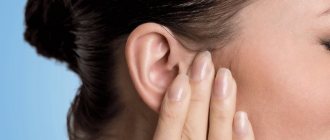Obstructive bronchitis is an inflammation of the bronchi, which is accompanied by a narrowing of their lumen due to swelling or spasm, as well as the accumulation of thick mucus, which leads to impaired ventilation. The disease manifests itself as a wet cough, shortness of breath, and wheezing. Unlike other forms of bronchitis, the treatment regimen in this case is broader: antispasmodic therapy, hormonal drugs and more are often included.
Acute obstructive bronchitis often develops in young children, while adults are more susceptible to chronic disease. In the second case, concomitant disorders are often observed, that is, we are talking about chronic obstructive pulmonary disease.
Causes
The pathological process most often develops due to the action of several factors. These include:
- Smoking;
- Occupational hazards;
- Unfavorable state of the environment;
- Anomalies in the structure of the upper or lower respiratory tract;
- Frequent colds1.
These factors lead to disruption of mucociliary clearance - a natural mechanism whose function is to cleanse the respiratory tract and bronchi from pathogenic microorganisms and their metabolic products. Exacerbation of chronic obstructive bronchitis can be caused by a viral and, less commonly, bacterial infection.
Basic ways to avoid bronchitis or quickly recover from illness
If you want to prevent the occurrence or development of bronchitis, you should be careful about your health. For example, smokers are advised to quit or reduce the number of cigarettes they smoke. This will reduce the rate of development of COPD and reduce the severity of cough. Playing sports or traveling, especially walking or cycling, will not interfere.
It is recommended to undergo annual vaccination to protect against influenza, as well as pneumonia, which is done once every five years.
How does the disease manifest itself?
Symptoms of obstructive bronchitis appear during its exacerbation. The main complaints include:
- Cough. Most often with the discharge of sputum, during an exacerbation its volume increases.
- Shortness of breath during exercise. The intensity of shortness of breath depends on the severity and level of compensation of the disease. Most often, breathing difficulties are observed during prolonged walking, heavy lifting and other types of activity.
- General weakness, increased fatigue. Typical for people who have been suffering from chronic obstructive bronchitis for a long time.
- Symptoms of hypoxia or lack of oxygen.
With bacterial inflammation, an increase in body temperature is more often observed, the sputum becomes purulent in nature, and the symptoms of intoxication intensify. Coughing attacks occur mainly at night, during physical activity or due to irritants. There is also acute obstructive bronchitis, which is more violent, but can result in complete recovery. This form is especially common in young children, but with proper treatment it does not leave behind negative consequences. In any case, in order to prevent the development of complications, therapy for obstructive bronchitis should be carried out under the supervision of a medical specialist.
Air barrier. How does obstructive bronchitis occur?
How does obstructive bronchitis occur?
The respiratory tract in childhood suffers most often compared to other organs. They are affected by various viruses and bacteria, resulting in bronchitis. If thick mucus accumulates in the bronchi and it becomes difficult to breathe, then obstruction develops. Neonatologist Ekaterina Sergeevna MOKEEVA (Nizhny Novgorod) told us about what obstructive bronchitis is and what the most effective methods of treating this disease exist.
The essence of obstruction
Bronchial obstruction is a sudden and severe spasm of the bronchi, which occurs under the influence of infectious or non-infectious factors.
The term “obstruction” means a blockage of the bronchi, which prevents air from entering the lungs freely. Anatomically, obstructive bronchitis differs from normal bronchitis in changes in the entire thickness of the bronchus, which leads to its narrowing, swelling and damage to the entire bronchial tree.
Most often, children under 5 years of age suffer from acute obstructive bronchitis, since their bronchopulmonary system is not yet sufficiently developed. The habit of children breathing through their mouth also plays a big role.
Parents should know that in the nasal passages there are special cilia that, like traps, capture the smallest particles of dust, virus and bacteria. Therefore, if the nasal passages are inoperative and the child’s nose does not breathe, then the risk of contracting bronchitis increases many times over.
Picture of the disease
Obstructive bronchitis begins as a common acute respiratory disease, no different from a cold. The child may develop a cough - in the first days of the illness it is not strong and unobtrusive, a runny nose and a sore throat.
As the cough worsens, there is an increase in body temperature, usually up to 38°C. The cough becomes painful, paroxysmal, does not bring relief (the mucus is very viscous and does not separate) and is most annoying at night. Moreover, a cough with obstructive bronchitis can be whistling, dry, or wet, but even in the latter case, sputum is difficult to clear.
By the patient's breathing, you can understand when bronchial spasm is severe: even without a phonendoscope, wheezing, whistling, shortness of breath, and noise can be heard.
Due to allergization of the body by toxins released during the life of pathological bacteria, effusion occurs through the mucous membranes. The mucous membrane swells and thereby reduces the lumen of the bronchi. This gives a picture of obstruction - narrowing.
Next, an inflammatory process begins in the affected bronchi with the release of histamine. Copious, difficult to separate sputum appears. If this condition is not treated, the obstruction will soon become chronic.
A more complex picture emerges with the development of obstructive bronchitis in children against the background of an allergic reaction. The disease begins with a strong cough, accompanied by a characteristic whistle when inhaling. The child becomes lethargic and inactive, complains of weakness and headache. There may also be pain in the chest along the bronchial tree.
Typically, the hallmark of allergic obstructive bronchitis is the connection between the onset of the disease and any changes in the external environment. For example, you purchased a new carpet, furniture, or you got a pet.
The child may develop shortness of breath - rapid and difficult breathing during physical exertion, and in severe cases, at rest. But unlike cardiac dyspnea, the child does not tend to sleep while sitting or take a vertical position - on the contrary, such children sleep better on their stomach, sometimes hanging their head or placing it below body level - this is due to better discharge of sputum in this position.
Causes of the disease
Risk factors for obstructive bronchitis are:
- frequent acute respiratory viral infections;
- lack of outdoor sports activities;
- sedentary lifestyle;
- tendency to allergies;
- weakened immunity.
Infectious factors that can cause bronchial obstruction include rhinoviruses, adenoviruses, and mycoplasma.
Among non-infectious factors, allergies are the most common. Allergens are found in large quantities in sweets, canned foods, various processed foods and drinks. An allergic reaction can be caused by absolutely any drug or any dietary supplement. Allergies to house dust, animal hair, plant pollen, poplar fluff and much more often develop.
Many parents do not react in any way to the frequent skin rashes that appear in a child after eating new foods. They do not pay attention to the seasonal runny nose, motivating their superficial attitude to this problem by the fact that the symptoms of this condition are minimal, and therefore do not require treatment. This is wrong. In the chronic course of even a mild allergic process, there is a risk of increased sensitization (sensitivity) of the body.
Also, non-infectious factors that contribute to the occurrence of obstruction in a child include passive smoking. Parents should remember that tobacco smoke has an extremely negative effect on the child’s body.
Bronchoobstruction is caused by congenital malformations of the bronchi, impaired immunity due to the characteristics of pregnancy and childbirth of the mother (prematurity, fetal hypoxia, birth injuries and early infections).
We clarify the diagnosis
It is not difficult for an experienced pediatrician to identify obstructive bronchitis; just ask about the symptoms of the disease and listen to the baby’s breathing.
The radiograph sometimes (but not always) shows an increased pulmonary pattern. In a general blood test, ESR may be accelerated. If the cause of the disease was an allergy, the number of eosinophils in the child’s blood will be increased.
Effective treatment
For children under 2 years of age, it is advisable to undergo treatment in a hospital setting.
It is necessary to give a sick child a lot to drink (up to 2 - 3 liters of liquid per day). A hypoallergenic diet is required, and nutrition must be nutritious and age-appropriate.
Any store-bought sweets, sweet carbonated drinks, food products containing preservatives and dyes, including milk cheeses and fruit yoghurts, sausages, and citrus fruits should be completely excluded from your baby’s diet. Also, do not give your child smoked foods, limit the consumption of fatty and fried foods. Of the store-bought fruits, offer only green and yellow ones (red and orange are prohibited) that correspond to the area and time of year. Be careful when including honey and other bee products in your menu.
For obstructive bronchitis, the doctor usually prescribes antispasmodics (no-shpu, papaverine), bronchodilators (salbutamol, berodual), expectorants (lazolvan, ambrobene, acetylcysteine), antihistamines (zodak, zyrtek, tavegil).
If you have a nebulizer at home, you can remove mucus by inhalation using expectorant and bronchodilator solutions. In each specific case, the drugs are selected by the doctor.
Antipyretics should be given only when the body temperature exceeds 38.5°C. The optimal drug is paracetamol. Amidopyrine, antipyrine, phenacetin should not be given to children. It is not recommended to use aspirin and analgin - they can have negative side effects.
If the cough has become dry and occurs in attacks, it is possible to use drugs that affect the cough center, such as libexin. You just need to remember that in this case the sputum will be separated poorly and such drugs must be used in its absence.
Vibration (drainage massage) facilitates the discharge of sputum and can be performed by both the nurse and the parents. In this case, the collar area, back, then the chest, respiratory muscles (sternocleidomastoid, intercostal muscles, abdominal muscles) are massaged.
Antibiotics are prescribed in case of secondary bacterial infection. The following symptoms may indicate this: body temperature is above 39°C, lethargy and loss of appetite are observed, weakness and headaches are expressed, in the general blood test the ESR is accelerated and the content of leukocytes is increased.
It is imperative to rinse the nasopharynx with saline solution, Borjomi, preparations based on sea water and products containing silver.
To restore nasal breathing, vasoconstrictor drugs (tizine, oxymetazoline, etc.) are used. Nasal drops cannot be used for a long time - this can lead to atrophy or hypertrophy of the nasal membrane.
Prevention of exacerbations
The most important thing is to understand the cause of the obstruction and try to eliminate it.
If the disease was caused by a viral infection, then you need to strengthen your immune system and take antiviral drugs prescribed by an immunologist during the cold season.
If the culprit of obstructive bronchitis is an allergy, it is necessary to create hypoallergenic living conditions and, if possible, conduct allergy tests.
Protect a child prone to bronchial obstruction from passive smoking and irritating environmental factors (sudden temperature changes, polluted air, dust and mold in the apartment).
And, of course, the baby needs to be hardened in all available ways: a contrast shower, sufficient time in the fresh air, physical education, swimming in the pool are useful.
Ekaterina QUEEN.
Diagnostics
The beginning of diagnosis consists of a thorough collection of complaints and medical history. An informative method is to listen to breathing in the lungs using a phonendoscope. Obstruction is characterized by the presence of scattered dry or moist rales. In addition to the examination, if necessary, the doctor may prescribe additional tests:
- X-ray of the OGK;
- Spirometry;
- General blood analysis;
- Blood biochemistry (to determine markers of inflammation);
- Bacteriological examination of sputum and culture for sensitivity to antibiotics;
- CT or MRI of the lungs to assess the presence and nature of changes in them3.
After making a diagnosis, the doctor should talk about the prevention of exacerbations of obstructive bronchitis and prescribe a course of treatment.
Basic means of diagnosing obstructive bronchitis
To obtain the most accurate diagnosis, it is very important to conduct high-quality diagnostics.
- Computed tomography allows you to immediately exclude diseases that have similar symptoms, such as lung cancer, pneumonia or bronchiectasis;
- Spirometry or FVD is a breathing test that makes it possible to exclude bronchial asthma from a possible list of diseases. With its help, COPD is detected;
- Thanks to blood tests, doctors can detect the presence of an inflammatory process occurring in the body. The degree of activity of microorganisms and viruses that cause inflammation will be determined immediately;
- Using sputum cultures, it is possible to identify bacteria that provoke inflammatory processes in the bronchi.
Treatment
Therapy for obstructive bronchitis should be comprehensive. To reduce obstruction syndrome, bronchodilators are used - drugs that relieve spasm and expand the lumen of the bronchi. This makes breathing easier and eliminates shortness of breath. Medicines that thin mucus and relieve cough are also prescribed. If a bacterial cause of bronchitis is confirmed, a course of antibiotics is necessary to prevent the infection from developing into pneumonia. Antihistamines (antiallergic) drugs are used if the obstruction is caused by an allergic component.
Diet for obstructive bronchitis
For obstructive bronchitis, for a speedy recovery you need to eat five times a day. Protein should predominate in the patient's diet. Also, with food, the patient should receive a sufficient amount of vitamins A, E, C, B1, B12.
Be sure to drink plenty of warm water. Helps relieve cough:
- linden tea with honey/raspberry jam;
- ginger tea;
- milk with mineral water;
- fruit and vegetable juices;
- lemon water.
Drink at least 2 liters of fluid per day for adults and at least 1 liter for children.
Until complete recovery, it is recommended to eat more fruits and vegetables, boiled meat, fish, cereals, nuts, eggs, and seafood. Reduce the amount of salt to 5 g per day. Avoid spices and spicy foods - they provoke coughing attacks.
Prevention
To prevent exacerbations of chronic bronchitis, a person must first give up smoking and work in conditions of increased air pollution. An adequate response of local immunity to viruses and bacteria is also very important. If there is no such response, activation of local immunity is required, since the body’s protective factors can eliminate most of the pathogens that lead to bronchitis.
IRS®19 is a drug with an immunomodulatory local effect, which includes a mixture of 18 bacterial lysates. It comes in the form of a nasal spray and acts directly on the nasal mucosa, which is considered the entry point for viruses and bacteria into the respiratory tract4.
IRS®19 activates immune cells of the nasal mucosa and begins to act immediately upon contact with the mucous membrane5. When added to standard symptomatic therapy, IRS®19 reduces the duration of symptoms by 2 times5. The drug is used for the treatment and prevention of respiratory diseases in children and adults from three months.
The most effective methods of treating chronic obstructive bronchitis
For treatment, first of all, contact a pulmonologist who will prescribe examination and treatment. At the Integramed respiratory medicine clinic, appointments are conducted by pulmonologists with 20 years of experience. Applicable:
- Therapy carried out with specially developed drugs. First of all, these will be medications that make it possible to dilate the bronchi - bronchodilators. They are used as inhalations. As a result of the effect of the medicine, the bronchi expand, which improves breathing and mucus removal;
- Antibiotics are used that successfully destroy bacteria and viruses that provoke inflammatory processes. Their dosage is prescribed only by a pulmonologist or therapist;
- It is possible to prescribe an oxygen inhalation procedure;
- A vibration massage of the chest will also not be amiss, as it allows for a better effect on the lungs and speeds up the removal of phlegm.
- In some cases, folk remedies can also help. But only in consultation with your doctor and in the indicated doses.
Treatment of bronchitis
Bronchitis, like other forms of ARVI, is a typical self-limiting disease. In most cases, no drug treatment is required. It is important to create favorable conditions for the child to recover: sufficient drinking, maintaining an optimal microclimate (temperature and humidity) in the room, using antipyretic drugs if necessary. And of course, it is worth protecting your child from tobacco smoke.
It is worth noting that coughing in children, especially young children, is much less effective in coughing up mucus; they simply have not yet learned to cough “correctly.” Fortunately, not only coughing removes phlegm, people have a special mucociliary clearance system - tiny microcilia that rhythmically move and push mucus higher and higher through the respiratory tract. Adequate fluid intake into the body and a normal microclimate help the child quickly remove all the mucus formed due to inflammation and facilitate recovery.
There is no effective treatment against the viruses that cause ARVI and bronchitis. Drugs that in our country are called “antiviral” or “immunomodulatory” in the context of the treatment of ARVI have no proven effectiveness and are not used in developed countries. Doctors at the Rassvet clinic do not recommend taking them for bronchitis. The same can be said about “mucolytics” and “expectorants” used for wet coughs. They have been tested many times in independent studies and have not been shown to be effective for coughs in children (the group receiving the placebo recovered on average in the same time frame as the group receiving the drug). It is even believed that up to the age of 5 years, such drugs can worsen the course of a cough, since they increase the volume of sputum, and young children cough it up extremely ineffectively. Antitussives (used against dry coughs) have more than modest evidence of effectiveness, but can still be prescribed for a hacking cough if parents see at least some relief from them.
That is, we cannot eradicate the very cause of bronchitis or influence the pathogenesis of the disease; we have to wait until the immune system does its job. But there is good news: the child’s body is quite capable of coping with respiratory viruses, this is inherent in nature. Bronchitis is an unpleasant but not dangerous disease.
Cough is a very worrying symptom for parents; it is constantly heard and reminds that the child is sick, but the child much less than his parents (if it bothers him at all).
Separately, it should be said about bronchitis, accompanied by broncho-obstructive syndrome - excessive narrowing of the lumen of the bronchi, caused not only by inflammatory edema of the bronchial wall and accumulation of sputum in its lumen, but also by spasm of smooth muscles in the bronchi. In Russia it is usually called “obstructive bronchitis”, in the West virus-induced wheezing, virus-induced asthma, or simply wheezing (“wheezing”). With this type of bronchitis, special wheezing occurs, they are called “wheezing” or “musical”, and in some cases they are so loud that you can hear them even without a stethoscope, just from the child’s mouth in a quiet room, or you can feel the vibration of the child’s chest with your palms. Obstructive bronchitis can lead to respiratory failure and this is the only bronchitis for which we can effectively treat with medications (bronchodilators, inhaled steroids and some others). If bronchial obstruction leads to severe respiratory failure, the child may need to be hospitalized for active treatment.
In some cases, antibiotics may be required. Antibiotics have no effect on a viral infection, but bronchial obstruction can develop due to certain bacterial pathogens, and viral bronchitis can be accompanied by bacterial complications. The need for antibiotics may be indicated by a “second wave” of fever, lack of improvement over a long period of time, deterioration of the condition, the appearance of additional symptoms (for example, ear pain), and inflammatory changes in blood tests. In such situations, it is always worth showing the child to the doctor and deciding on the need for antibiotic therapy.
Causes of COPD
COPD can be caused by heavy smoking , occupational hazards, and exposure to unfavorable environmental conditions with increased air pollution.
The appearance of the disease can also be influenced by:
- heredity,
- pathogenic microorganisms,
- complications after infectious diseases and bronchial asthma,
- cold and wet climate,
- elderly age.
Causes of bronchitis
Primary obstructive bronchitis in children is often caused by viruses. The following pathogens affect the bronchial tree:
- parainfluenza virus type 3;
- respiratory syncytial virus;
- enterovirus;
- influenza viruses;
- adenoviruses;
- rhinovirus.
Often the manifestation of obstructive bronchitis in a child is preceded by a cold. The disease is repeatedly caused by other pathogens of persistent infections, which include:
- chlamydia;
- mycoplasma;
- herpesvirus;
- pathogens of whooping cough, parawhooping cough;
- cytomegalovirus;
- mold fungi.
Often, with repeated cases, the opportunistic microflora of the respiratory tract is activated. Allergic reactions play a significant role in the development of bronchial inflammation in children. Relapses of obstructive bronchitis are facilitated by infection with worms and foci of chronic infection (sinusitis, tonsillitis, caries). Factors that provoke the development of exacerbations include:
- physical fatigue;
- hypothermia;
- neuropsychic stress;
- congenital failure of protective barriers;
- unfavorable climate;
- poor environmental stop;
- decreased immunity;
- lack of vitamins.
Passive smoking, as well as irritation of the ciliary epithelium by dust particles and chemicals, play an important role in the development of obstructive bronchial inflammation in children.
Classification and stages of development of obstructive bronchitis in children
There are three forms of obstructive bronchitis - bronchiolitis, acute and recurrent. Bronchiolitis often affects children under 2 years of age. This is how their body responds to the introduction of rhinovirus or respiratory syncytial infection. It is preceded by a mild ARVI. As the condition worsens, respiratory and heart failure develops. With this form, characteristic moist, fine-bubble wheezing appears on inhalation and exhalation.
Acute bronchial obstruction most often occurs in children aged three to five years. It is caused by parainfluenza and influenza viruses, adenovirus. First, the temperature rises to high numbers. Other symptoms of ARVI appear. Then manifestations of respiratory failure increase. The child has difficulty breathing. The muscles of the neck and shoulders are involved in the breathing process. Whistling sounds occur when exhaling. Exhalation becomes difficult and lengthens.
Recurrent obstructive bronchitis occurs at any age. It is caused by: mycoplasma, cytomegalovirus, herpes virus, Epstein-Barr virus. Bronchial obstruction increases gradually. This occurs at normal or low-grade fever. Nasal congestion, runny nose and infrequent coughing are noted. Shortness of breath is moderate. The general condition is almost unaffected. According to the course of the disease, the following forms are distinguished: acute, protracted, recurrent and continuously relapsing.
Treatment of cough in COPD
The development of COPD can be prevented by limiting the influence of negative factors, but it cannot be cured. Treatment only slows down the progression of the disease, but does not contribute to a full recovery.
First of all, smokers should completely stop using tobacco products, and passive smokers should try to distance themselves from the source of tobacco smoke. The attending physician may prescribe medications from various groups that can alleviate symptoms:
- Inhaled bronchodilators that dilate the bronchi;
- Mucolytic drugs to reduce the viscosity of sputum and expectoration;
- Antibiotics for identified infection;
- Anti-inflammatory drugs;
- Anticholinergics to suppress the reaction of the bronchi to irritating agents.
Often, an exacerbation of COPD requires emergency hospitalization.
Chronic obstructive pulmonary disease (COPD) - symptoms and treatment
If patients have cough, sputum production, shortness of breath, and risk factors for developing chronic obstructive pulmonary disease have been identified, then they should all be diagnosed with COPD.
In order to establish a diagnosis, clinical examination (complaints, anamnesis, physical examination) are taken into account.
A physical examination may reveal symptoms characteristic of long-term bronchitis: “watch glasses” and/or “drumsticks” (deformation of the fingers), tachypnea (rapid breathing) and shortness of breath, changes in the shape of the chest (emphysema is characterized by a barrel-shaped shape), small its mobility during breathing, retraction of the intercostal spaces with the development of respiratory failure, drooping of the borders of the lungs, change in percussion sound to a box sound, weakened vesicular breathing or dry wheezing, which intensifies with forced exhalation (that is, rapid exhalation after a deep inhalation). Heart sounds may be difficult to hear. In later stages, diffuse cyanosis, severe shortness of breath, and peripheral edema may occur. For convenience, the disease is divided into two clinical forms: emphysematous and bronchitis. Although in practical medicine, cases of a mixed form of the disease are more common.
The most important stage in diagnosing COPD is an analysis of pulmonary function (PRF) . It is necessary not only to determine the diagnosis, but also to establish the severity of the disease, draw up an individual treatment plan, determine the effectiveness of therapy, clarify the prognosis of the course of the disease and assess the ability to work. Establishing the percentage ratio of FEV1/FVC is most often used in medical practice. A decrease in the volume of forced expiration in the first second to the forced vital capacity of the lungs FEV1/FVC to 70% is the initial sign of airflow limitation even when FEV1>80% of the proper value is preserved. A low peak expiratory air flow rate, which varies slightly with the use of bronchodilators, also speaks in favor of COPD. For newly diagnosed complaints and changes in respiratory function indicators, spirometry is repeated throughout the year. Obstruction is defined as chronic if it occurs at least 3 times per year (despite treatment), and COPD is diagnosed.
Monitoring FEV 1 is an important method to confirm the diagnosis. Spireometric measurement of FEV1 is carried out repeatedly over several years. The rate of annual decline in FEV1 for mature adults is within 30 ml per year. For patients with COPD, a typical indicator of such a drop is 50 ml per year or more.
A bronchodilator test is a primary examination during which the maximum FEV1 value is determined, the stage and severity of COPD is established, and bronchial asthma is excluded (if the result is positive), the tactics and volume of treatment are selected, the effectiveness of therapy is assessed and the course of the disease is predicted. It is very important to distinguish COPD from bronchial asthma, since these common diseases have the same clinical manifestation - broncho-obstructive syndrome. However, the approach to treating one disease is different from another. The main distinguishing feature in diagnosis is the reversibility of bronchial obstruction, which is a characteristic feature of bronchial asthma. It has been found that in people diagnosed with COPD after taking a bronchodilator, the percentage increase in FEV1 is less than 12% of the initial value (or ≤200 ml), and in patients with bronchial asthma it usually exceeds 15%.
Chest X-ray is of auxiliary value, since changes appear only in the later stages of the disease.
An ECG can detect changes that are characteristic of cor pulmonale.
Echocardiography is necessary to identify symptoms of pulmonary hypertension and changes in the right heart.
Complete blood count - it can be used to evaluate hemoglobin and hematocrit (may be elevated due to erythrocytosis).
Determination of the level of oxygen in the blood (SpO2) - pulse oximetry, a non-invasive test to clarify the severity of respiratory failure, usually in patients with severe bronchial obstruction. Blood oxygen saturation less than 88%, determined at rest, indicates severe hypoxemia and the need for oxygen therapy.







